|
As a child, the church taught me that my body was not mine. It was a temple for Christ. I was to take care of it, but not for me. I, and my body, were vessels to be used by God. I wasn’t supposed to have any autonomy. Thankfully in my case, the message of ownership and usage didn’t extend to God’s representative, the pastor/minister/priest/deacon. Others over the centuries have not been as fortunate. Clergy who abuse their position are still a horrific reality.
I was supposed to be always listening for divine directives, to consecrate and dedicate every act to the Trinity. Music making, dancing, even sex… especially sex… were to be acts of holy supplication, offerings of praise and worship not just to cull favor, but as fulfillment of my purpose. I was created to give God glory. If I didn't, I was unworthy. As a child, my culture taught me that my body had no value. I could be seen, but not heard or believed. I could be in the room, but my thoughts and feelings and opinions had no value. I couldn’t express my emotions. Don’t talk back. What you crying for? Hush you don’t know anything. So I learned to suppress and ignore, making myself as small and as invisible as possible. As a teenager, patriarchy and toxic masculinity convinced me that I was not attractive enough because girls did not seek me as they sought others; that because of my soft rotundness I deserved ridicule; that my penis was probably too small to provide pleasure, even though I was being a good Christian by remaining chaste. Religion told me that natural hormone-driven sexual desires meant my faith was flawed; that they were a precursor to sin; that any sexual thought or expression (even masturbation) was tantamount to the sin itself and displeased God and I was bad. I signed purity pledges, feeling racked with guilt for my sexual awakening, berating myself for being weak. For the first twenty-one years of my life, my body and my faith existed in conflict with each other, ultimately both losing. Or at least what I understood to be a loss, but what would eventually become the first steps on a path of liberation as I progressively discovered spiritual beliefs that fostered inner alignment, not conflict. But even as my mind and heart opened, the practice of ignoring the body was too well ingrained. I didn’t know how to understand what my body was saying. I didn’t even know I should be listening. Meditation practices that focused on stillness subtly and inadvertently reinforced suppression of my body’s cries for attention. I was spiritual, but I was not in harmony with myself, because I was still not loving all of myself. To not be in touch with all parts of me was to deny love to all parts of me. I loved my mind, my heart, even my soul. But not my body. I didn’t hate it, I simply did not acknowledge it as anything other than a physical entity to be kept out of harm’s way. And then grief made itself known. Since 2015 its immense weight bore down on me as someone in my orbit died almost every year: spouse, family, friends. Trauma is not what happens to us. It’s how our body responds to what happens to us. My body, to which I was still more of a stranger than a friend, took the pain of the losses, held on to it, and reminded me that I just couldn’t think and talk my way out of the shock and suffering and sadness. Enter weightlifting. Enter running. Enter kink. Lifting brought me back to my body. Running brought me back to my breath. Kink brought me back to my sexuality. To lift without intention and attention on the body is a recipe for injury. As I pushed and pulled, the pain was pressed to the surface to be unabashedly released in racking sobs as I leaned against the weight rack between sets. I made more than a few folks uncomfortable at more than a few Planet fitness gyms. Lifting became my meditation and my medication, a body-centering practice that allowed the grief to work its way through me. I hated running before the losses started to pile up. I still hate running. I rarely run these days, but for a handful of years, until my knee reminded me that some injuries never entirely recede, I found the bottom of my lungs, a stillness of mind, and a zone wherein nothing resided but the Breath and Oneness with my body. Kink was the unexpected safe space that provided the container for me to fully accept, love, and reclaim my sexual body. With each act, every deeply embedded line of code that would elicit shame and doubt and self-loathing and unworthiness around my body and sexual self began to be rewritten. In kink spaces I found more acceptance and belonging among bodies of all shapes and sizes and genders and ages and ethnicities… more than I ever experienced in spiritual communities. In kink spaces there was no shame, no judgment, no ridicule, no comparisons, only a desire for empowering consensual and sensual connection. My body, it turns out, is as much a source of my truth as any other part of me. It is my Early Warning System. It is my final arbiter. It is my everything in between. It knows my feelings before I can articulate them. It lets me know which choice is the right one for that moment. It is the place and the process of self-regulation. It is not mere flesh and bone, but its own beingness, alive, sentient, fully integrated with mind and soul. It is not a temple for an imagined deity, but the home of all I Am. It is me, and I am it. It is wisdom. It is history. It is ancestry. It is who I am yet to be. The ongoing invitation from my body: listen to me, believe me, love me. My RSVP: Yes, always.
0 Comments
The Breath is more than biology. It is an energetic and spiritual practice of returning to our Essence, the purest sense of our Self that transcends the mental and the physical and the emotional, that existed and continues to exist before and beyond our wounds. We mostly breathe above the neck: short, shallow, unconscious, survival-oriented panting. What’s the minimum amount of air we need to keep us upright? To keep our organs functioning? To keep our brain swirling in the morass of anxiety and fear?
Sometimes we realize we haven’t been breathing at all. I remember that as I witnessed the horror of George Floyd’s lynching, his airway forcibly constricted, unable to breathe, I too stopped breathing, unintentionally, paralyzed by terror, my air flow returning with a sudden gasp when my lungs could no longer go on without oxygen. Unfortunately, like many before and after him, Floyd did not have the luxury of taking another breath. His life was crushed under the weight of a historical and systemic oppression that presses down on us every day in any number of ways, scattering our attention and our energy, depleting our life force. The Breath can recenter and reground us, but only if we breathe with the entirety of our lungs, and with our whole body. It requires conscious effort to entirely fill the lungs. The diaphragm is a muscle, after all, but left to its own habitual devices it contracts only so much. It requires our attention and intention to tighten it even more, along with the intercostal muscles which lift the rib cage, to make an increasingly negative space within us, a vacuum to draw in life-sustaining air. But what does it mean to breathe with our whole body? It begins with knowing that every part of us is connected to every other part of us. Our body is a symbiotic entity, not a collection of compartmentalized functions. We cannot breathe as we should if our body is in a state of tension. The Breath relaxes the body and our body relaxes the Breath. Envision every muscle and bone and organ contracting and expanding in harmony with the inhale and the exhale, gradually making them all slower, eventually letting the exhalations and relaxations longer than the inhalations and the tensions. Inhale and tense for a count of four. Hold for a count of six. Exhale and relax for a count of eight. Repeat. Lengthen each count. Don’t just do it. See it. Feel it. Embody it. Close your eyes and let all your attention follow in the inflow and outflow of air, the rise and fall of the chest, the subtle contraction and release of the whole body, the soothing of our trauma. To be sure, deep breathing requires intention and practice and commitment. It compels us to first pause (see previous post) and notice how present we are, or more likely, are not, to and with and for ourselves. We often place ourselves at the bottom of our priorities list. That comes from a variety of places: capitalism, which tells us we have to constantly hustle to succeed and that our worth is defined by our financial status; religion (mostly Christianity), which tells us we’re born inherently unworthy; patriarchy, which tells us we have to aspire to the cisheteronormative standard of toxic masculinity. Panic might arise when we strive and fail to meet a particular benchmark. Or even worse, a constant undercurrent of shame and self-reproach because we don’t measure up. The invitation: set an hourly alarm and breathe deeply for at least one full minute. Two would be better. We slip away from ourselves so easily. The Breath brings us back home. What’s in a pause? A recognition. A refrain. A reset. An opportunity. The amygdala hijack happens at least daily. Since arriving in Barbados, perhaps multiple times a day. Having lost my father last May, I almost couldn’t handle the news that my mother had a stroke just over five months later. It was a relatively minor stroke, but enough to sideline her from her usual relentless pace of work. Pause… to face the overwhelm of fear and panic that set in with the initial thought of losing my second parent in the same year; to feel the upswell of grief from my father’s death and every one of the six deaths in the previous seven years; to confront the irrational twinge of anger and shame that I wasn’t there; to bask in the relief and gratitude that it was not more debilitating, that she was still with us, still herself. It happened a week before I was already scheduled to be on the island for my monadic winter escape. And it meant that the nature of my trip would change dramatically. I would be adding caretaker and sherpa to a schedule that, up to that point, included a few hours of online work daily but mostly trips to the beach, time with friends, getting reacquainted with a home and an island with which I was mostly estranged. Pause… to acknowledge the anger arising from the realization that much of my time would not be my own; the self-judgment and guilt arising from such a thought; the resentment I hold for the family businesses that consume her time and energy, that would now consume mine; the frustration and despair I feel because she won’t slow down and work less. As I interact with my mother and help with her recovery journey, all I can say is, “Thank the Universe for therapy!” I’ve had to call upon every trick in the book when it comes to setting and holding boundaries, managing my self-care, deftly cutting the wires from every button that’s being pushed so my childhood wounds don’t explode all over the place. In reality, a wound is always touched or threatened, and the amygdala does what it does best: bypass the slow, reasoning and reasonable forebrain to prepare me to fight or flee or freeze or appease my attacker. Except I’m not really being attacked, and to respond as if I am will only do everyone greater injury including myself. So I learn to Pause. To just stop. To do nothing. To reject the habitual amygdala responses. To give the forebrain time to reboot and remember… remember to be patient; to be vulnerable; to open my heart; to ask for what I need; to discover my need; to empathize; to reestablish a boundary; to say no; to say yes; to forgive; to listen; to love. I Pause for a moment, a minute, an hour, a day, a week, a month, a year… however long it takes to dive deep into myself; to travel back in time to the first causes of suffering; to extend compassion and love to the parts of me still caught in the wound; to examine and deconstruct the internalized beliefs that diminish my inherent worth; to ease the constricted parts of body that hold the pain like a sacred totem to fear. The Pause is the first step in the journey of being who I aspire to be in every unforeseen life moment. The Pause gives me the opportunity to choose better; to be better; to stay heart-centered; to stay connected to, and engaged with, the other; to realize there is no other, only us now in this moment. The Pause is Power. The Pause is Peace. The Pause is Freedom. [A condensed version was originally published in Unity Magazine Jan/Feb 2023 issue]
Thanks to Valentine’s Day, love is everywhere during February. Modern Western culture glorifies coupledom and marriage. Matrimania, the over-hyping of marriages, relationships, and weddings, drives a 57 billion dollar industry. Unfortunately, homophobia, singlism (the stereotyping, stigmatization, and discrimination against people who are not married) and polyphobia (ranging from unease about the idea of Ethical/Consensual Non-Monogamy [ENM] – any relationship in which all participants explicitly agree to have multiple concurrent relationships – to outright hatred of polyamory) leads to discriminating against those who don’t fit the just-the-two-of-us heterosexual mold. How did we even get here? We’re not sure exactly. In a 2011 paper, researcher Kit Opie of University College London showed that early humans, or hominids, began shifting towards monogamy about 3.5 million years ago. He surmised that monogamy in early primates meant that males were able to protect and nurture their children, which led to higher rates of survival and increased nourishment—which had an impact on human brain development further down the line. Our modern idea of socially imposed monogamy may have been first established in ancient Greece and Rome. One theory holds it was for a military advantage: monogamy meant that fewer men would leave a group to search for wives elsewhere and would be available to fight. As Christianity emerged in the Roman Empire in the first centuries AD, it embraced and took monogamy a step further: marriage was between a man and woman, their bodies and desires reserved for each other and God. So technically a threesome? The industrial revolution gave birth to the solitary effects of the modern workplace and weakened community bonds. The pressure monogamy put on a couple increased. As psychotherapist Esther Perel writes in Mating in Captivity, “today, we have to give one person what an entire village used to provide – financial and emotional support, companionship, entertainment, friendship, familiarity, mystery, love, sex, the works…” Physicians and sexologists who were also eugenicists wrote many of the early 20th-century books about courtship and marriage, thereby introducing pseudoscience based on common racist and xenophobic attitudes to the relationship lexicon. Some of their central tenets – incompatibility and deference to men – persist in modern relationship and marriage advice. Best-selling books like John Gray’s “Men Are From Mars, Women Are From Venus” perpetuate the message that men and women are fundamentally at odds, and learning to accept and accommodate their innate gender differences (tropes, really) is the relationship secret sauce. These are but a few of the factors that led to heterosexual monogamy being the established norm. And the thing about norms? Those who exist outside of them are often rejected. Both conscious and unconscious discriminations and resentments develop (ranging from micro aggressions to outright hostilities), some of which become enshrined into organizational policies, and state or federal laws. Members of ENM and LGBTQ+ communities share the stigma and fear of coming out, retaliation for coming out, marital/adoption/custody/parental issues, family rejection, difficulty accessing supportive mental health care, housing discrimination, workplace discrimination, and more. As someone who doesn’t hesitate to say what others might prefer to remain unsaid, I was genuinely surprised at my own reticence during my early months of practicing ENM to let others know. Yes, I’m Polyamorous and proud of it. Polyamory, by the way, is only one expression of ENM. There’s also swinging, open marriage/relationship, triads or throuples, and more. Click here for a primer. For an even more profound unmaking of relationship norms, consider Relationship Anarchy – the practice of rejecting relational hierarchies and creating more equality (time, value, commitment) across relationships. True Justice (love in action) and Liberation (removal of obstacles to a lived experience of equanimity and wholeness) begins with our own decolonization. Take a moment, right now, to pause and notice what you are feeling. If there is any discomfort, consider exploring deeper: How do I really feel about non-monogamy? Is it wrong? Am I curious? How do I feel about being married or being in a relationship, or about others who are? How do I feel about being single, or about those who are? What are the beliefs beneath these feelings? Did I unconsciously adopt them? Can I truly celebrate love in all its forms regardless of my own orientation and relationship preference? Be gentle with yourself as you investigate. Forgive and make amends if you must. Lean in, love, and find your liberation. [NOTE: The post pic is the newly adopted (2022) Polyamory Pride flag. A white chevron flows outward to depict the growth and possibility of the non-monogamous community. It sits asymmetrically on the flag to reflect the non-traditional style of polyamorous relationships. The heart reminds us that love in all forms is the core of non-monogamy. Red stands for love and attraction. Blue stands for openness and honesty. Gold represents the energy and perseverance of those in the non-monogamous community. Purple to represent a united non-monogamous community.] [Originally published in Unity Magazine Nov/Dec 2022 issue. Pic via vendorful.com]
Mark Twain once famously said, “Never let the truth get in the way of a good story.” This might be the time of year we most lean into his quip. From Native Americans and Pilgrims idyllically brunching together, to time-bending circumnavigation and gift delivery in a sleigh propelled by flying reindeer, to the incarnation of God via miraculous virgin birth, the narratives connected to our most cherished holidays require our suspension of truth and fact. We choose instead to observe celebrations based on our preferred, more comfortable versions of history. Or, arguably worse, we know the facts and still choose to honor the traditions of holidays built on fabrications. “What’s the harm?” you might ask. Simply this: when we use sanitized stories to bypass painful truths, we help to maintain systems of injustice. We’re not exactly sure when the Pilgrims had their first harvest celebration, but the one which we often teach our children about occurred in 1621 three years after nearly half of the settlers died because of their inability to feed themselves during a severely harsh winter. Tisquantum (also known as Squanto), a formerly enslaved member of the local Patuxent tribe, showed them how to work the land. To celebrate, they held a feast after one particularly bountiful harvest. Fun fact: the local Native Americans were not invited. They arrived to investigate the sound of musket fire, because no survival celebration is complete without firing deadly weapons into the air. Saint Nicholas, the 3rd century saint of Myra, evolved from a generous and humble monk to a magical icon that is not only a mascot of capitalism, but also a creepily omniscient tool used by parents to manipulate their children’s behavior: be good or no presents from Santa who’s always watching, even when you’re asleep. Speaking of creepy omniscient beings, why do we still celebrate the birth of God’s “only son” at a time when it didn't happen (best guesses: June or October based on celestial events that could explain the “star of Bethlehem”), and in a way it didn’t happen? Sex, and only sex (at that time), led to conception. Also, virginity is not a thing, but that’s another article for another time. When we blithely ignore the fallacies of our holiday narratives, we lull ourselves into inaction and systems of oppression continue to thrive. As we carve the Thanksgiving turkey, do we slice in remembrance of the estimated 12 million Native Americans that were killed by the European settlers and their descendants? Do we think about contributing to efforts to return stolen land to living tribe members? Do we acknowledge our complicity in the capitalist structures built on the enslavement of over 10 million Africans that continue to benefit the few and harm the many? Demigods proliferate mythology: Achilles and Perseus from Greek mythology; Bacchus and Hercules from Roman mythology; are we ready for “Jesus from Christian mythology?” These demigods, by the way, were the product of randy male gods impregnating mortal women often without their consent. Apparently women’s bodily autonomy wasn’t a thing back then either. Again, another article for another time. If you haven’t before, I invite you to not be casual about your holiday celebrations this year. Practice mindfulness, as in being fully present to the discomfort of the entire story, the inner conflicts that might arise, and what they may inspire you to do. Have brave conversations. Challenge the status quo. Only then might we be able to create new rituals and a culture that uplifts and liberates all. Oh right… Happy Kwanzaa! [Originally posted to social media on 9/5/22]
Like I said before, I’m not on vacation. Neither is my grief. After an amazing previous weekend in Marrakech, I had thought about visiting Tangier or Fes this past weekend. I noticed my first mood shift last Wednesday night. On Thursday I visited the Hassan II Mosque, a breathtakingly majestic sanctuary. Despite my smiles in the pics I posted on Facebook, my mood continued to slump. I couldn’t make up my mind about where to visit next, or even if to go anywhere. Indecision, a second clue. Friday morning I woke up late, unmotivated, and soon found myself binging season 3 of The Umbrella Academy. Multiple consecutive hours of TV, a third hint. When I found myself weeping at a wedding scene, it was finally obvious: I was in the midst of yet another grief spiral. I don’t know what triggered it. I may never know. I don’t need to know. It was a bittersweet realization though. At least I could now name what was happening, and that alone began to help me feel more at peace. For a while I turned off the computer and lay staring out the window, the pristine blue sky occasionally blurred by tears. I momentarily second-arrowed myself for, after all these years, taking so long to recognize what I was going through. I let any thoughts of wasting precious hours I could be out touristing float away. If any particular losses from the past seven years arose, I let them come and go, not questioning why those and not others. I let myself be in it, and it in me. Such is the weight and the beauty of grief. It is omnipresent and omnipotent. It doesn’t matter where or when I am. While it may seem dormant for stretches of time, it continuously underscores every moment, even the blissful ones, adding a depth and breadth that is often not appreciated until after the sadness subsides. I later shared how I was feeling with my companion. She held space for me as she held me. I felt even lighter. Grief is not a burden to carry alone. It is a tender manifestation of love that is meant to be shared so other hearts may open. Our losses connect us, and I am here… a safe space if you ever want to share yours. It doesn't matter where. It doesn't matter when. [A revised version originally published in Unity Magazine Sep/Oct 2022 issue. Image via boardmanagement.com]
It is an unwritten rule of ministry: don’t talk about politics. I agree. Instead of politics, we should talk about governance. Politics is the partisan theater that exists around governance. It’s a polarizing and harmful distraction from the real purpose of governance: creating the policies that determine how we live with each other. We don’t all agree on local, state, and federal laws and policies, which is probably why churches avoid talking about them. And when I say churches, I mean the members of spiritual communities that don’t want to be made uncomfortable by these discussions for fear of creating divisions or driving congregants away. It’s a convenient spiritual bypass: If we don’t talk about it, it doesn’t exist, and we can continue living under the delusion of different political affiliations harmoniously cohabitating in metaphysical bliss. Ugh. Why should we talk about governance? Because Jesus. We call him the way-shower, but do we actually follow the way he showed us? Jesus continually questioned out loud the laws and customs that did not demonstrate love, justice, and liberation, thereby depriving individuals of their humanity. It’s why he declared the Sabbath was made for [hu]man, not [hu]man for the Sabbath: no one should starve to death to uphold a custom. It’s why he stood between the woman caught in adultery (the man conspicuously absent) when the mob were within their legal rights to stone her: human compassion trumps punitive traditions. He knew such actions were divisive. It’s why he said, “I have not come to bring peace… I have come to set a man against his father, and a daughter against her mother, and a daughter-in-law against her mother-in-law; and one’s foes will be members of one’s own household.” [Matt 10:34-36] Let’s face facts: if we truly live as Jesus did, we’re going to upset a lot of folks because not everyone places compassion, justice, and liberation as priorities over their own beliefs, traditions, and comforts. Governance is challenging. Ever been to a church or school board or home owners association meeting? But the real (and hard) question is, will we govern from compassion and justice, with a goal of liberation, or not? Will we create laws that make it easier to vote, expand support for the most vulnerable, protect the environment, curtail gun violence, and address the legacy of enslavement and genocide woven into the country’s founding that continues to impact us all? Or will we create policies that limit access to voting, remove environmental regulations, restrict women’s bodily autonomy, and ban books, discussion, or instruction that address racial injustices? Such policies reflect a time based in white supremacy thinking that denied the rights of anyone who didn’t fit the ideal image: white, heterosexual, middle class or higher, able-bodied, Christian, English-speaking, American-born, or according to the latest coded catchphrase, “legacy Americans.” The question always before us is, how do we want to live with each other? How do we want to govern each other? Do the officials we elect reflect our spiritual principles and world vision? Do we exemplify Unity principles when we cast our vote? Or do we avoid voting all together, preferring to envision our ideal world rather than help to create it? Jesus also said, “Whoever does not take up the cross and follow me is not worthy of me.” [Matt 10:38] In other words, if we don’t live the way that Jesus demonstrated, we don’t have the right to claim him as our way-shower. How will we choose to live? [Originally published in Unity Magazine Jul/Aug 2022 issue. Pic via Open Society Foundations]
Even though this column is titled “Love And Justice For All”, it’s emphasis so far has decidedly been about antiracsim, and how white supremacy cultural norms continue to thrive both consciously and unconsciously in us and our spiritual communities. It goes without saying that there are other traditionally marginalized groups that need more love and justice as well. And similarly, our individual and collective biases towards those groups are also largely unconscious, existing unseen and unchallenged. Take, for example, a few months ago during announcements in a Unity church service at which I spoke. An upcoming women’s retreat was, in an attempt to be humorous, described as an “XX chromosome getaway” to discuss “secret XX chromosome things.” Undoubtedly no harm was intended, but it betrayed the unconscious and internalized heteronormative norms of our culture. The harmful impact of that message was that transgender women may have felt excluded. Transgender people are those whose gender identity is different from the gender they were thought to be at birth. Someone born with XY chromosomes might be assigned as biologically male, but feel entirely and authentically female. Similarly, someone born with XX chromosomes might be assigned as biologically female, but feel entirely and authentically male. Some transgender people identify as neither male nor female, or as a combination of male and female, and they may describe themselves as nonbinary or queer. When someone doesn't feel seen, they won’t feel like they belong no matter how much they are told that they are loved and welcomed. It is conflicting to tell someone they are whole, perfect, and loved, but then also make comments that do not honor them as they are. When the mistake, really the injustice, is noticed is there the courage to speak to it by someone other than the affected? Is there an openness to learning and changing and doing better? Will public amends be made? Will new training and policies be implemented? And not just for staff but also volunteers and congregants? These are just some of the rubber-meets-the-road steps that are needed to create a truly welcoming space. As it goes, perpetuating harm on any group disproportionately affects the women and people of color in that group. A study by the National LGBTQ Task Force indicates that Black transgender people have a 26% unemployment rate (twice as high as the unemployment rate for transgender people of all racial and ethnic backgrounds, and four times as high as the unemployment rate in the general population), 41% of Black transgender people have been homeless (more than five times the general population), 34% of Black transgender people have household incomes less than $10,000 (more than eight times the general population), and nearly half of the Black transgender population has attempted suicide. Black transgender women are disproportionately victims of fatal violence because of the intersections of racism, transphobia, sexism, biphobia and homophobia. Spiritual seekers tend to look towards teachings for spiritual enlightenment. We also have to look at educating ourselves about our unconscious and internalized cultural norms. We may believe that being more spiritual will automatically eliminate them, but unfortunately that is not the case. We can be both loving and perpetuate harm at the same time. Are we humble enough to accept this and do the work to transform ourselves individually and collectively? If we aren’t, we will continue to experience “welcoming” communities that are not very diverse, ultimately doing more harm than good along the way. [Originally published in Unity Magazine May/Jun 2022 issue. Pic via iStock]
In a post last year I invited us to ponder, “Are We ALL Really Welcome Here?” I asked how uncomfortable are we willing to get in our churches and spiritual centers so that everyone truly feels comfortable. In case it wasn’t clear, “we” meant those of us who posses greater levels of privilege in a patriarchal, heteronormative, abelist, agiest society that still defaults to whiteness as the racial and cultural norm. Many of these norms are internalized and unconsciously influence us. One example of an internalized white cultural/supremacy norm is policing the spaces that BIPOC (Black, Indigenous, Person of Color) folx occupy. This usually manifests when a white person believes a person of color should not be doing whatever they are doing in the way they are doing it in a space they probably shouldn’t be doing it. Remember in 2018 when a white woman called the police because black people were barbecuing in a public park? Or when a white student at Yale University called campus police on a Black graduate student after she fell asleep in a common room in her dorm? How about the two Black men that were arrested in Philadelphia after white Starbucks employees called the police because the men were sitting peacefully, but not ordering anything as they waited for a friend to arrive. You might think such extremes do not happen in spiritual communities. You would only be partly right. In a fascinatingly tone-deaf move, some churches have refused to let their congregants of color form affinity groups. To advance racial equity, there is work for white people and people of color to do together, and separately. Affinity groups (sometimes referred to as a “caucus”) provide spaces for people to work only with others from their race or ethnicity. Whether or not white bodies want to believe it, their very presence shifts the energy and power dynamics in the room. People of color feel safer to be themselves when they are by themselves. White people often struggle with this. “We’re not being racist!” they might say. “In these already divisive times we can't have more division. Having groups separated by color only fuels more racism! We should all be working together on this!” The desire for togetherness is a false flag. There aren’t objections to other groups that divide along different lines: women’s groups, men’s groups, LGBTQ+ groups, millennials or seniors groups. Another internalized white cultural/supremacy norm, which is intended to be a well-meaning reason for not having racial/ethnic affinity groups, is the thought that if white bodies aren’t in the room how will they know what to do about racism? “We need them (BIPOC) to tell us how to fix this, how to be antiracist! We also need them to hear how progressive we are, to hear how bad we feel for what they experience, to hear how angry we are on their behalf.” These are not just excuses for wanting to manage the space, but they also put extra burdens on people of color to help educate, validate, and provide comfort. Regardless of the intention, the impact on BIPOC of not allowing and supporting racial/ethnic affinity groups is that their needs (and by extension, they themselves) are not worthy of consideration, or can’t be trusted, or can only be allowed if it doesn’t take away from the comfort of the white-bodied majority. It is not welcoming. So again I ask: How uncomfortable are we willing to get so that everyone truly feels comfortable? [To learn more about Affinity groups visit projectsanctus.com/antiracism-affinity-groups] [Originally published in Unity Magazine Mar/Apr 2022 issue.. Pic via HURCA!/Adobe Stock]
Contrary to popular belief, or intention, spiritual communities are ripe breeding grounds for fear. To borrow from Buddhist teacher and author Tara Brach, fear is the anticipation of future pain. The problem is, we don’t always know when we’re being influenced by fear, or what we’re even afraid of. Take last November’s local and state elections. If you can remember that far back, there was one issue that galvanized many voters: Critical Race Theory (CRT). The over 40-year-old academic concept that rose from a framework for legal analysis proposes that race is a social construct, and that racism is not merely the product of individual bias or prejudice, but also something embedded in legal systems and policies. The idea mostly only circulated in academia and publishing for decades. It hit the mainstream a couple years ago when Christopher Rufo, a shrewd conservative activist, rebranded and weaponized it as a blueprint for teaching children that it’s bad to be white. Parents, especially white suburban women, flocked to the polls and, in the instance of the Virginia gubernatorial race, elected the candidate who vowed to ban CRT from public schools, even though it had never been part of the K-12 curriculum. A viral meme summed up the reaction of much of white America to CRT: “So the folks who tried to prevent a black girl from going to school in 1957 are opposed to their grandchildren learning about how they tried to prevent a black girl from going to school in 1957.” What allowed them to hear and respond to this particular racist dog-whistle? Fear. More specifically, the fear that by being exposed to the realities of racism in American history (and present), their children would have to grapple with the uncomfortable truths that their parents would rather ignore, or worse, maintain. Some parents believe their young children don’t even know what race is. Children know more than we give them credit for. Research has shown that 3-month-old babies prefer faces from certain racial groups, 9-month-olds use race to categorize faces, and 3-year-old children in the U.S. associate some racial groups with negative traits. By age 4, children in the U.S. associate whites with wealth and higher status, and race-based discrimination is already widespread when children start elementary school (American Psychological Association). CRT may not be the biggest trigger issue in churches, but conversations around racial reckoning stoke similar fears and discomforts, which in turn fuel older well-established anxieties: "We don’t come to church to feel uncomfortable"; "If we talk too much about this we will lose congregants and income"; "We aren’t racists because everyone is welcome here so there’s no need to talk about this"; "This is a divisive issue, we teach Oneness and Love." The notion that churches should not be places of discomfort betrays the true intention of any spiritual movement. We are supposed to be challenged, and it’s in the tension of discomfort that growth happens. Jesus did not make comfort a priority. He even threw insults, calling some people fools, hypocrites, snakes, and vipers. His approach was not antithetical to love. As James Baldwin reminds us, "Love does not begin and end the way we seem to think it does. Love is a battle, love is a war; love is a growing up." Hardly anyone is comfortable talking about racism. Spiritual growth and healing comes when we individually and collectively face our fears, as well as lean into the discomforts they generate. Let’s remember to love each other while we do. |
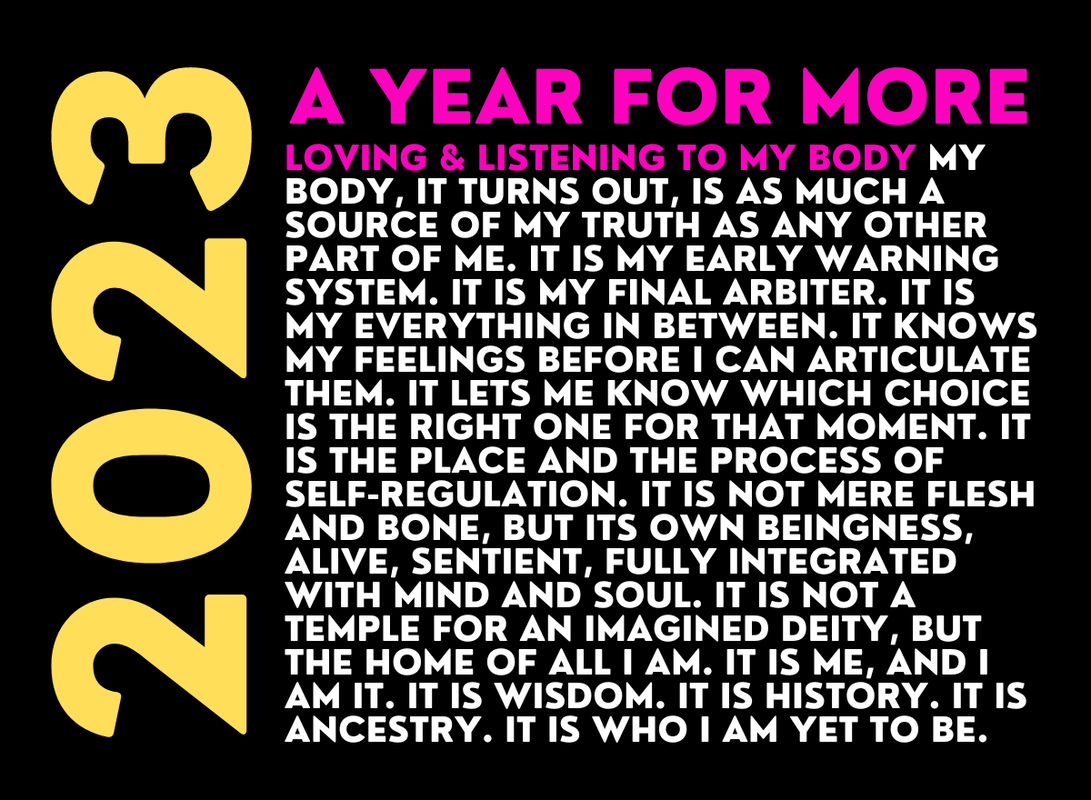
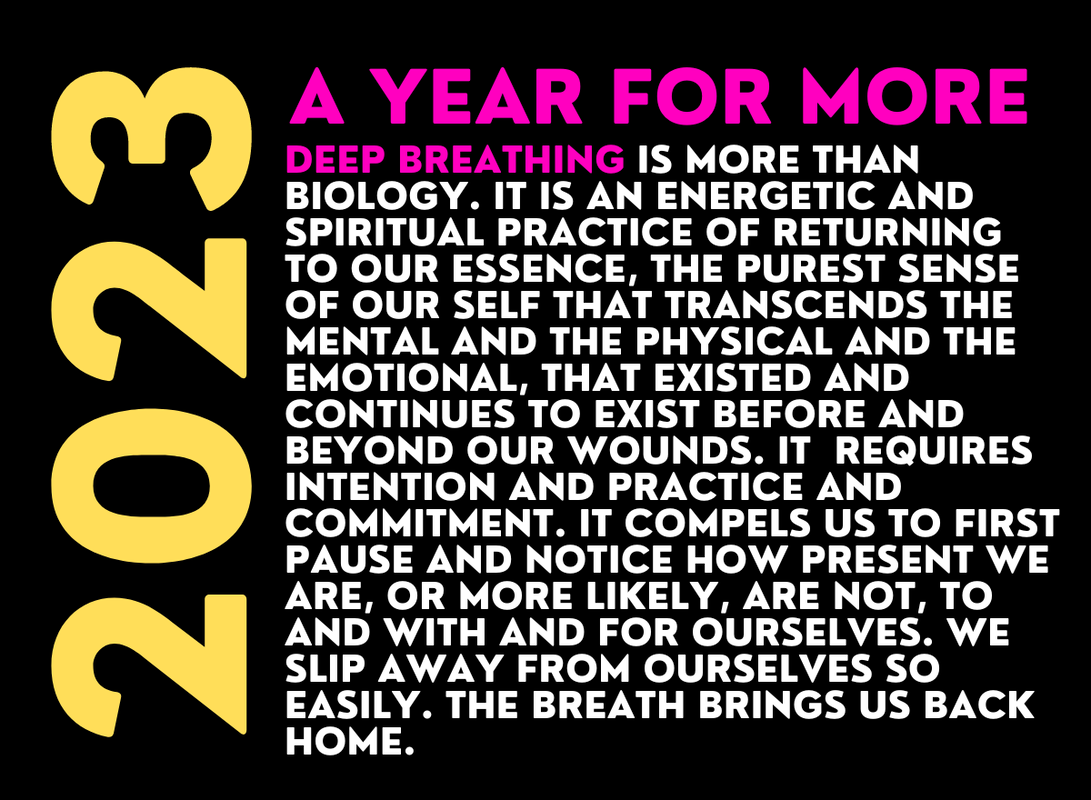
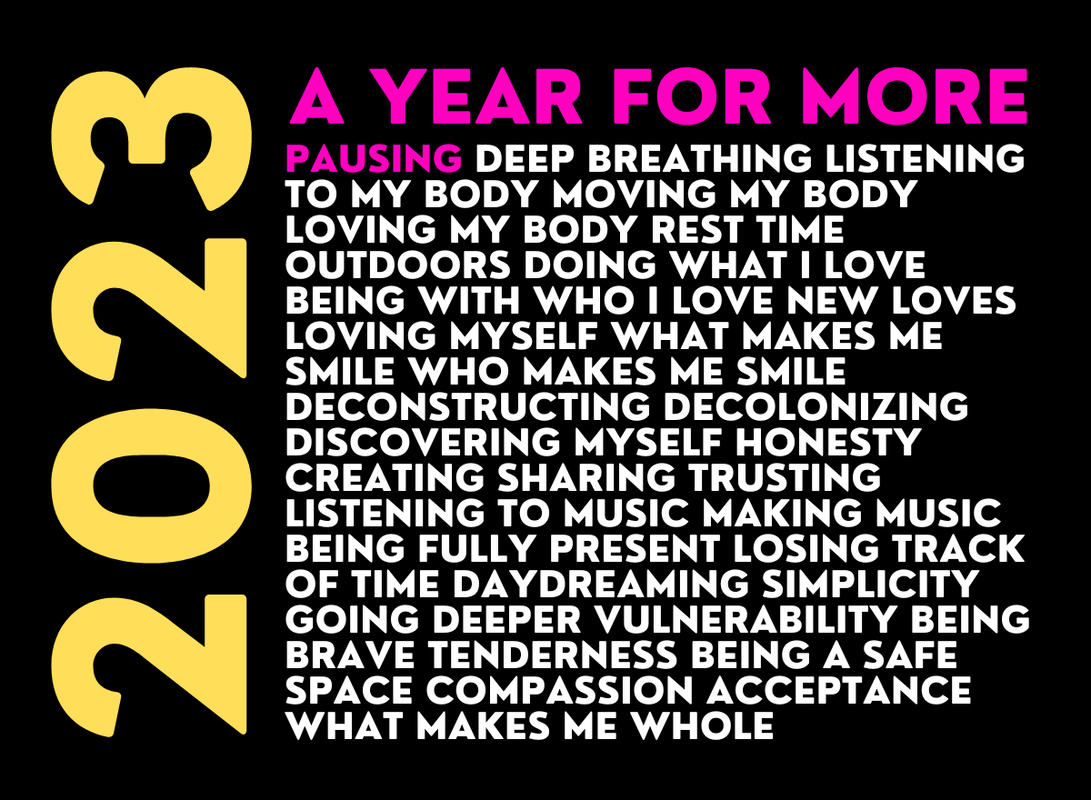
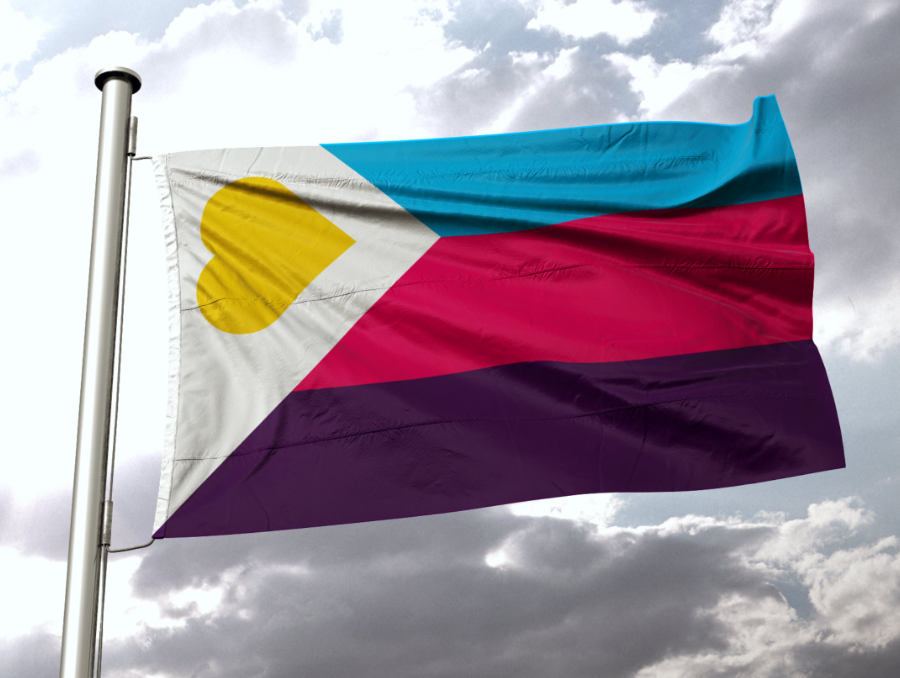
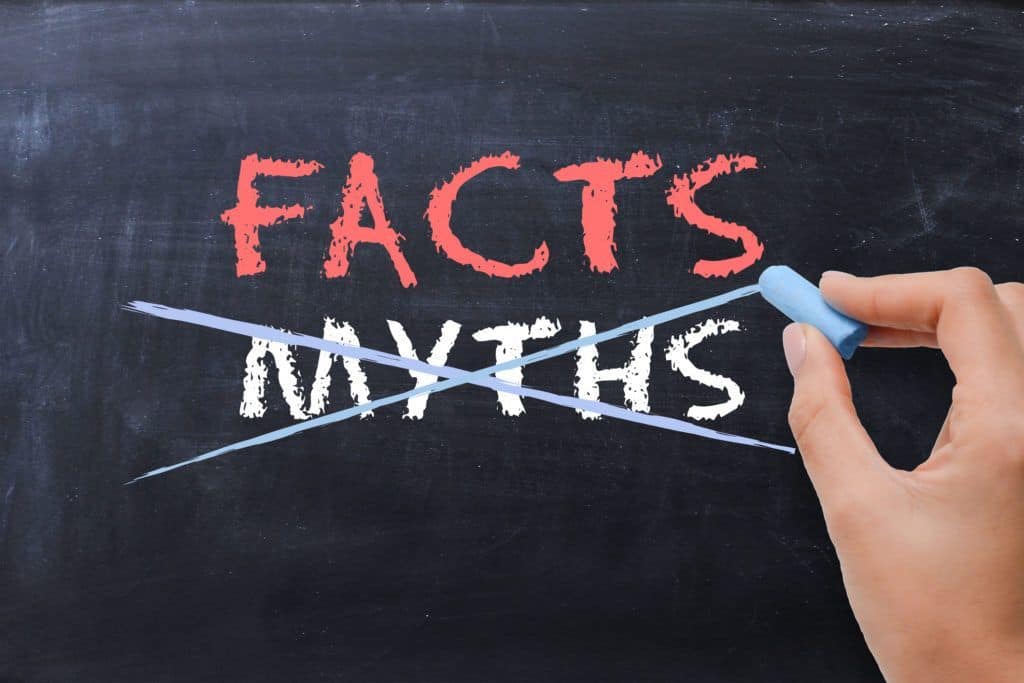
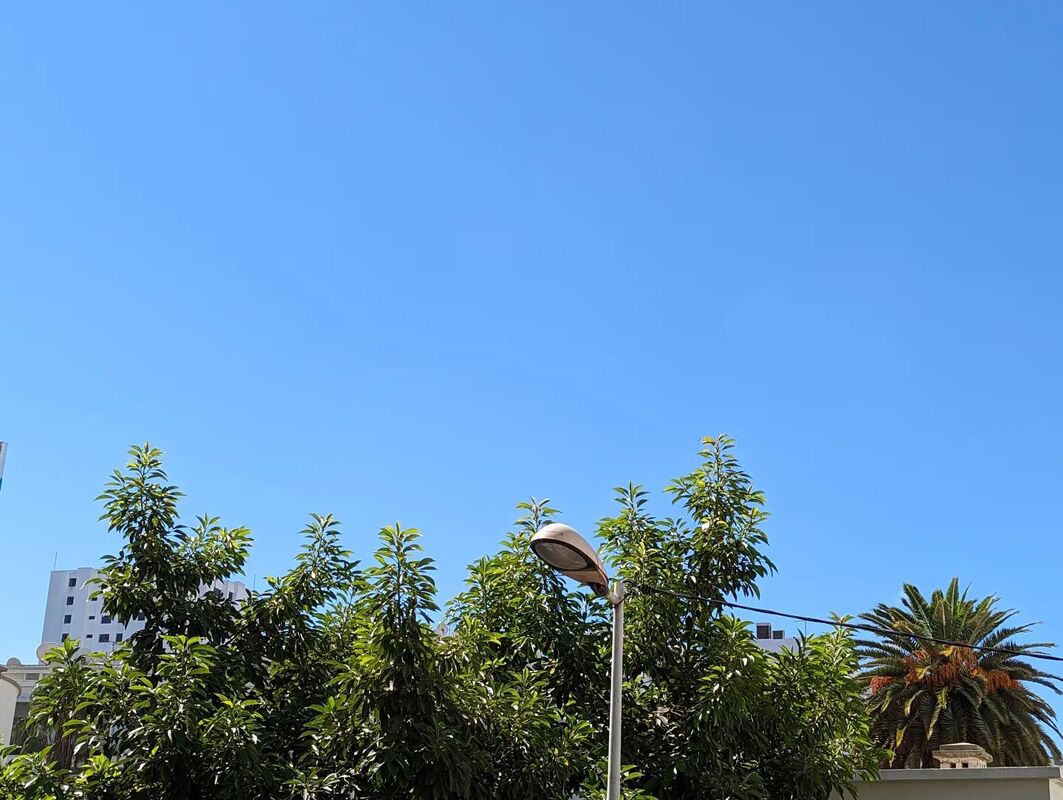
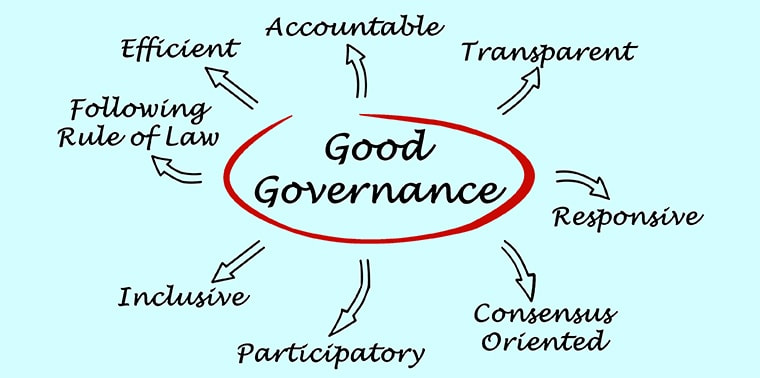
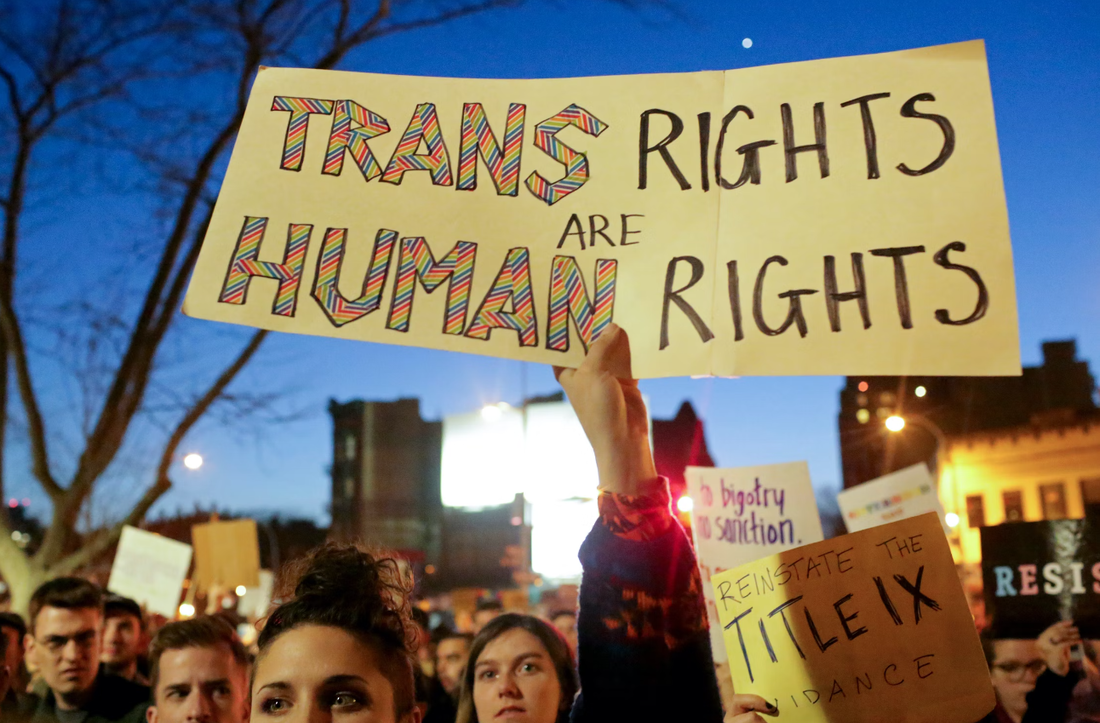
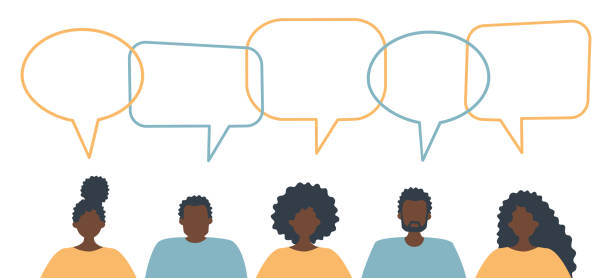
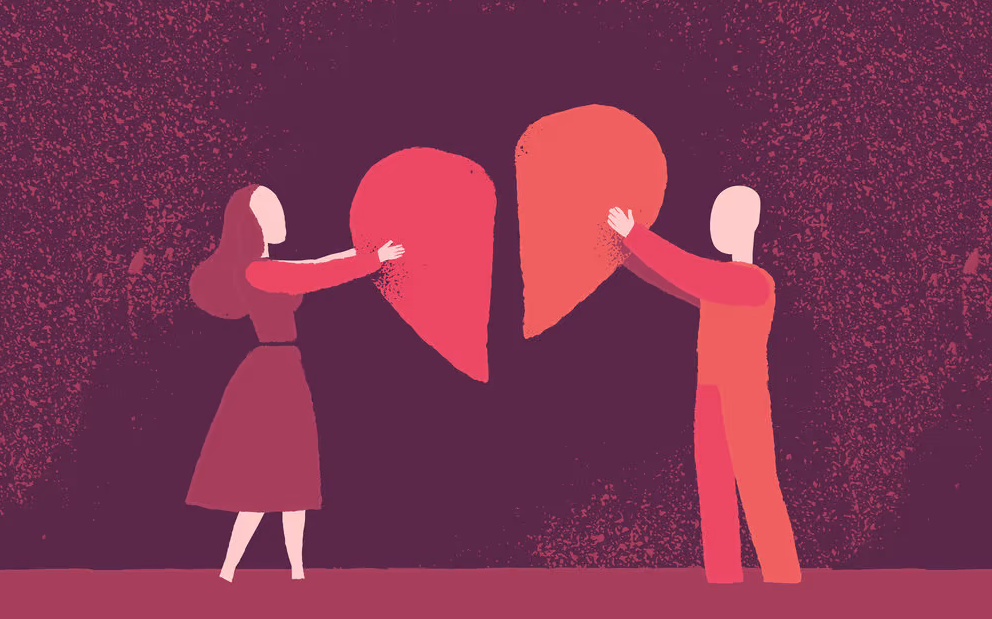
 RSS Feed
RSS Feed